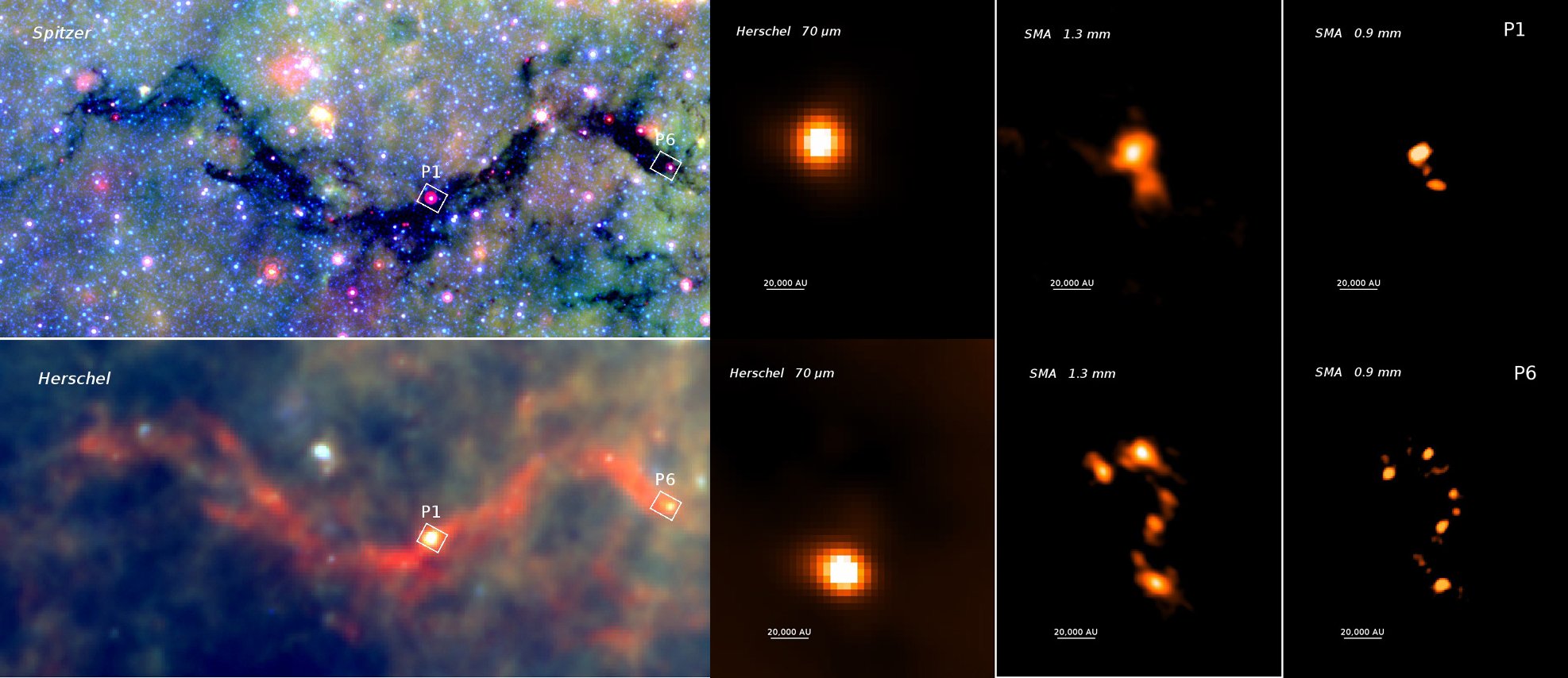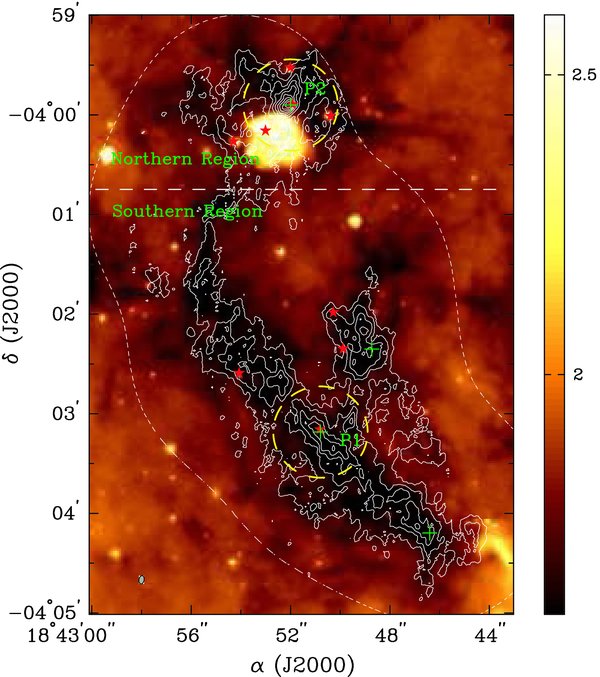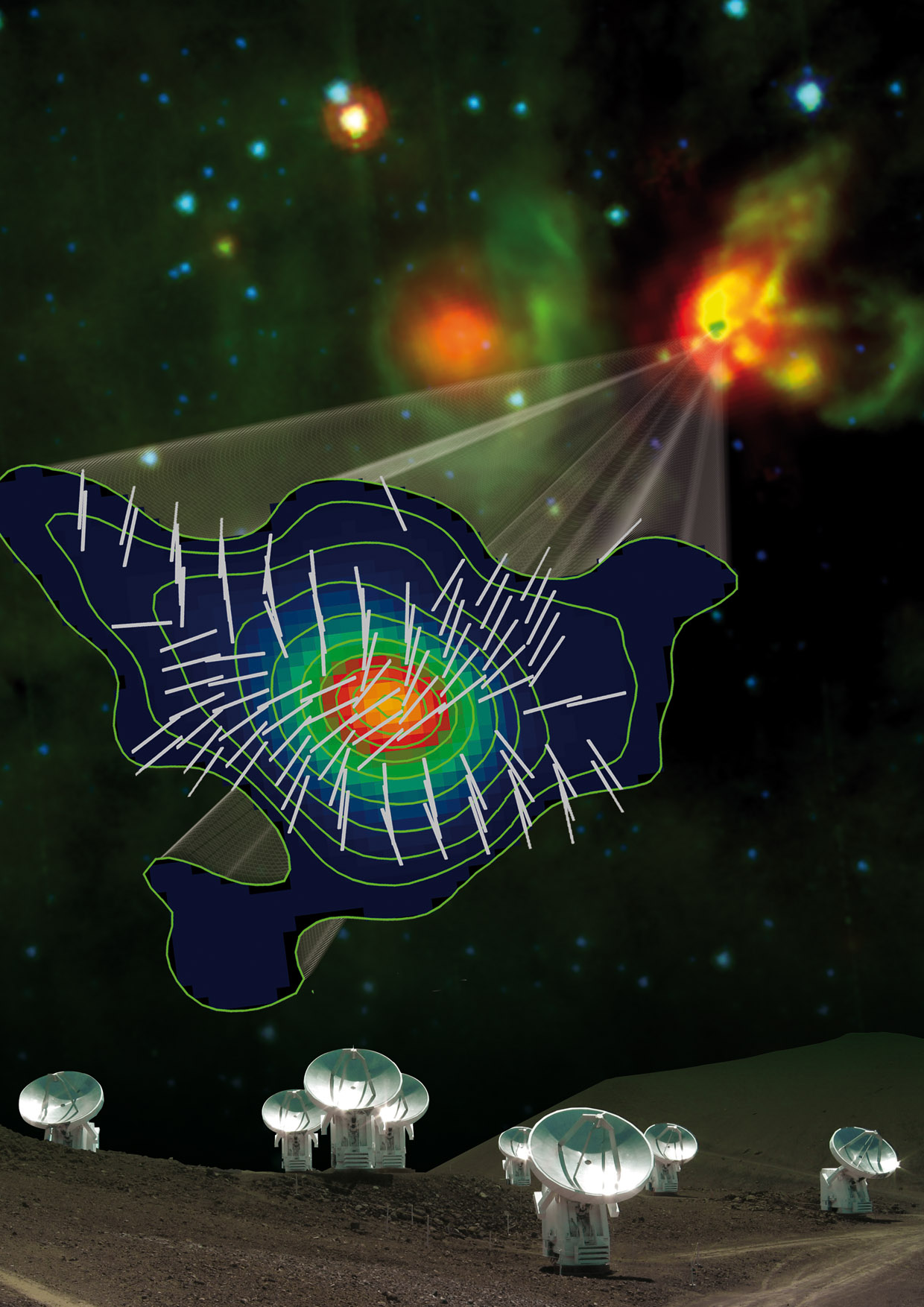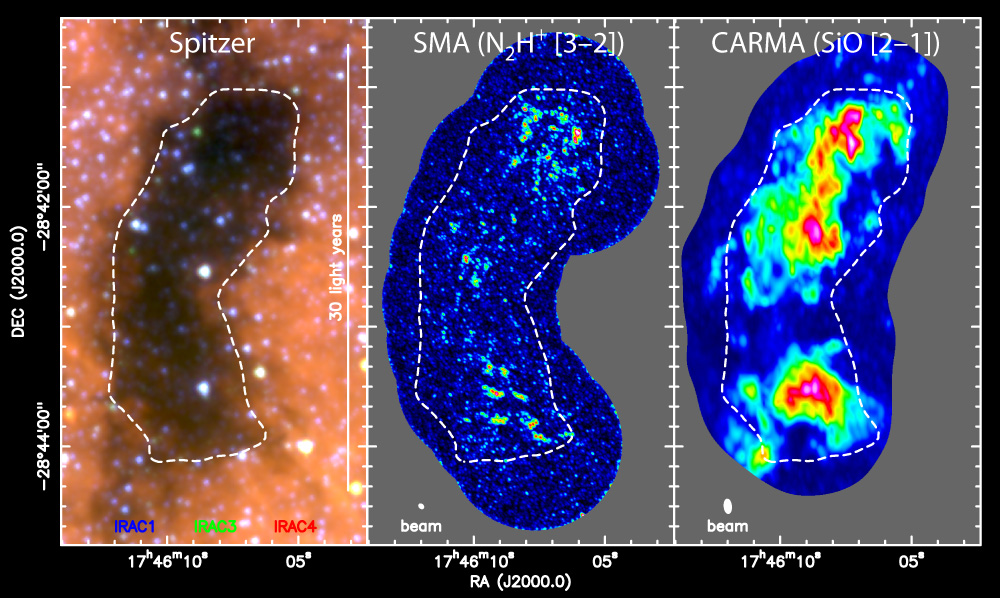| Research Highlights | ||||
Table of ContentsRotating Disk/Envelope around Massive Protostar IRAS 20126+4104The integrated emission of the NH3 (1,1) and (2,2) inversion transitions toward the young high-mass star IRAS 20126+4104, as compared to the bipolar SiO outflow (Cesaroni et al. 1999). The NH3 data, obtained with the VLA reveal a compact rotating disk-like structure surrounding a massive protostellar object (Zhang et al. 1998). Formation of Massive Cores in IRDC G28.34The integrated intensity of the combined NH3 (1,1) emission in white solid contours overlaid on the Spitzer 8 micron image in logarithmic color scales of an IRDC G28.34 (Wang et al. 2008). The star symbols mark the 24 micron emission peaks observed with MIPS/Spitzer. The cross symbols mark water maser emission detected with the VLA (Wang et al. 2006). The thin dashed line indicates the 50% of the sensitivity level of the 7 pointing mosaic in NH3. The NH3 data have a resolution of 5'' x 3'', shown as the shaded ellipse at the lower-left corner of the panel. The thick dashed circles mark the SMA fields presented in Zhang et al. (2009). The studies of G28.34 reveals a quiescent region in P1 which appears to be at the very beginning of a cluster formation, in contrast to the more evolved 'hot molecular core' phase in P2. The SMA image of the P1 region shows a string of 5 young dust cores resulting from the initial fragmentation of molecular cloud. Find more in this Press Release Magnetic Fields in G31.41The background shows a three-color Spitzer image of the massive star-forming region G31.41. Blue color represents the Spitzer image at 3.6 micron, green at 8 micron, and red at 24 micron. The zoom-in region depicts the 870 micron dust emission obtained from the Submillimeter Array of the massive hot molecular core in G31.41 (color and contour image) superposed with bars outlining the direction of magnetic fields. Pictured in the bottom of the image is the SMA stop Mauna Kea, Hawaii. This study by Girart, Rao, Zhang, Beltran and Estalella (Science, 2009) demonstrates the importance of magnetic fields during the collapse of massive molecular cloud core. Credit: Josep Miquel Girart (CSIC-IEEC), Nimesh Patel (Harvard-Smithsonian Center for Astrophysics) and Manel Carrillo. Find more in this Press Release Star Formation in the Central Molecular Zone of Galactic CenterThe Spitzer image of the cloud (left). The SMA image (center) shows the relative lack of dense cores of gas that are thought to form stars. The CARMA image (right) shows the presence of silicon monoxide, which suggests the cloud might be the result of two colliding clouds. Find more in this Press Release. Core Fragmentation in Snake Nebula G11.11
The panels on left show the Snake nebula as photographed by the Spitzer and Herschel space telescopes. At mid-infrared wavelengths (the upper panel taken by Spitzer), the optically thick nebular material blocks light from more distant stars. At far-infrared wavelengths, however (the lower panel taken by Herschel), the nebula glows due to emission from cold dust. The two boxed regions, P1 and P6, were examined in more detail by the Submillimeter Array (SMA). The panels on right focus on the P1/P6 star-forming regions within the Snake nebula, showing a far-infrared view from the Herschel space telescope, submillimeter views from the SMA are at the center and right. The sensitive, high-resolution SMA images reveal small cosmic "seeds" scattered in the shape of a question mark. Each seed will form one or a few massive stars. Find more in this Press Release. | ||||








